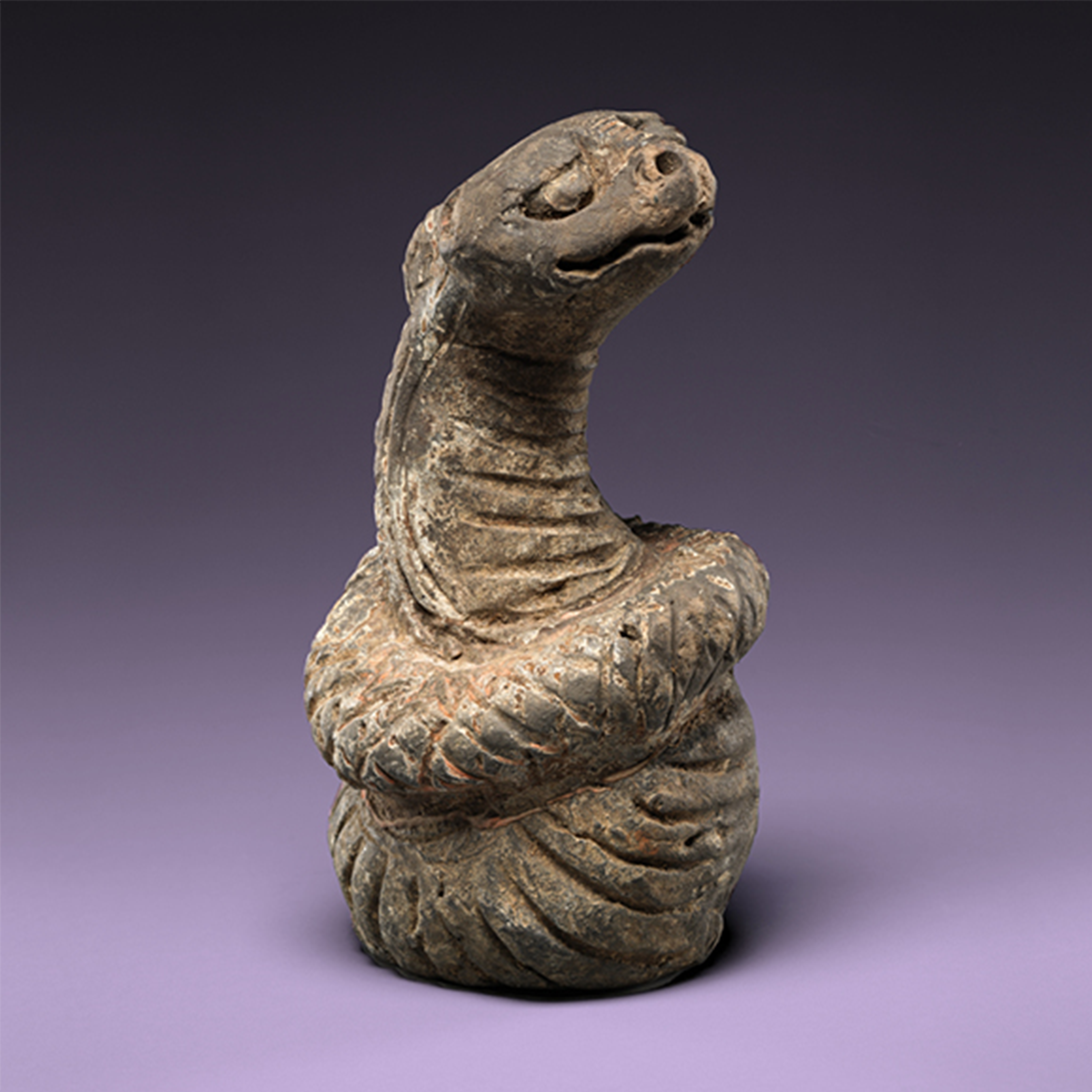The traditional East Asian lunar calendar consists of a repeating twelve-year cycle, with each year corresponding to one of the twelve animals in the Chinese zodiac. The association of these creatures with the Chinese calendar began in the third century BCE and became firmly established by the first century CE. The twelve animals are, in sequence: rat, ox, tiger, rabbit, dragon, snake, horse, ram, monkey, rooster, dog, and pig. Each is believed to embody certain traits that are manifested in the personalities of people born in that year. January 29, 2025, marks the beginning of the Year of the Snake, a creature characterized as alert, calm, and smart.
Celebrating the Year of the Snake presents a remarkable selection of works drawn from the Museum’s collection illustrating the significant role that the snake plays in Chinese culture, including a 3,000-year-old bronze ritual vessel with a spout formed by joined snakes’ heads, a 13th-century pottery figure of a mischievously smiling snake, and an 18th-century exquisitely painted porcelain cup portraying a scene from the “Legend of the White Snake,” a popular folktale of love and romance between humans and fantastic creatures.
The exhibition is made possible by the Joseph Hotung Fund.
Image Credits
Chinese zodiac figure: Snake (detail), China, Jin (1115–1234) to Yuan dynasty (1279–1368), 13th century. Grey earthenware with pigment. The Metropolitan Museum of Art, New York, Charlotte C. and John C. Weber Collection, Gift of Charlotte C. and John C. Weber, 1994 (1994.605.38)
